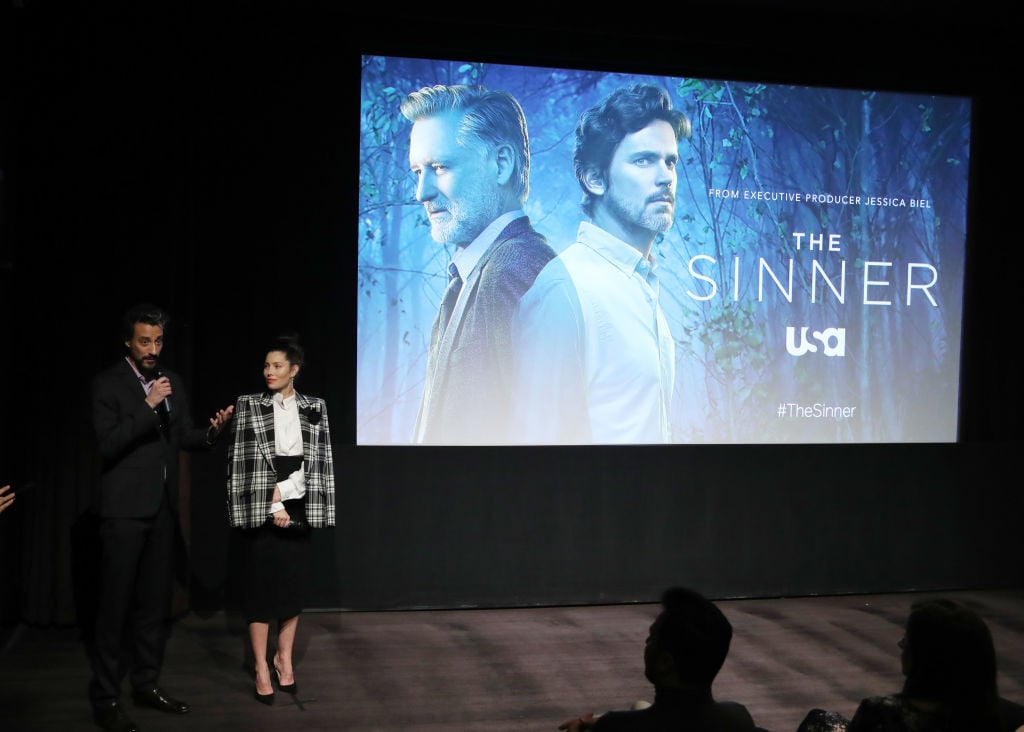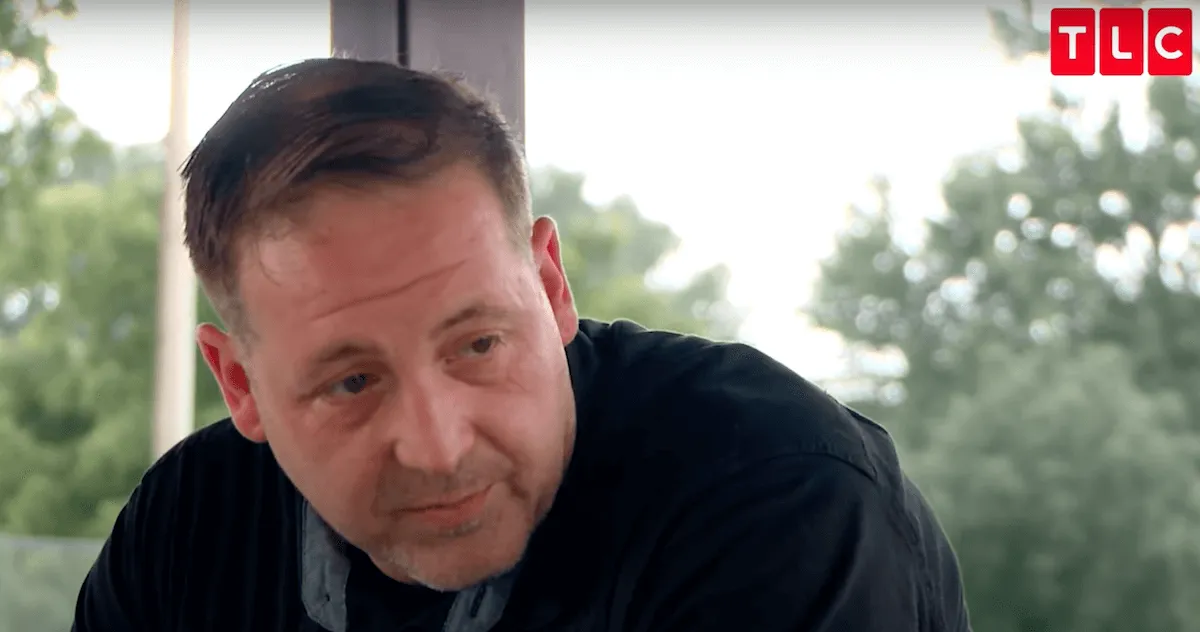‘The Sinner’ Creator Derek Simonds on Season 3: Upping the Ante via Isolation and a Spiritual Crisis
Each season, The Sinner takes audiences on a character-driven whydunit, exploring the depths of human nature as trauma acts as a guiding force — revealing what we are capable of when pushed to the mental brink.
Showrunner Derek Simonds explained to Showbiz Cheat Sheet the appeal tied to focusing on motive, as opposed to a “more conventional, catching the killer mystery story:” it creates an opportunity to write a “character study in the guise of a mystery.”

In season 3, the character study focuses on Jamie Burns (Matt Bomer), whose intimate yet twisted relationship with Nick Haas (Chris Messina) turns the small-town teacher into a homicidal yet vulnerable lost soul. Burns’ desire for human connection amidst a spiritual crisis materializes as a murderous and tragic dismissal of morality.
Derek Simonds discussed season 3 with Showbiz, defining Jamie Burns’ story as a tragedy, for he is “facing these harder truths, but he doesn’t have the tools to really grapple with them.”
Derek Simonds on trauma and isolation amid a contemporary spiritual crisis
In The Sinner‘s third season, Jamie Burns is begging for a connection, and he reaches out to Detective Ambrose. Burns hopes Ambrose will pull him from the edge, relate to him, and prove that he’s not all alone in this debilitating existential crisis — questioning the reason for life if not merely to confront what gives it meaning: death. Simonds commented on Jamie and Ambrose’s dynamic, stating:
In season three, he’s [Ambrose] is forced to confront a kind of mirror to himself. Jamie is his double and he’s basically saying “you know, we’re the same, and you need to recognize this otherwise you’re leaving me out here all by myself.”
Ambrose approaches and retracts — plays confidante and cop — for he sees himself in Jamie, which is both an intriguing attraction and a terrifying realization. Yet, Ambrose is there for Jamie, as much as he can be, teeter-tottering the line between a detective on a mission and a fellow traumatized man in crisis. Simonds said:
Trauma can only be healed through an authentic, intimate connection with someone else. And, that’s the sort of superpower that Ambrose has, and offers to the cases that he works on, is this very deep empathy and ability to listen deeply.
The season follows men in a society that no longer collectively confronts the reason for existence. A responsibility that used to fall on our religious institutions now winds up simmering beneath the surface, often ignored and relegated to the back burner until it boils over with an anxiety-inducing ferocity. Or, the need to confront such “larger questions” is replaced, often with technology (which is ill-equipped to handle the lack of human connection at the crux of the crisis), as Simonds explained. Simonds told Showbiz:
We are collectively in a spiritual crisis, and Jamie is in a spiritual crisis. We don’t have a new thing, a new practice that grounds us, and keeps us connected now. We’ve kind of lost faith in our religious institutions; we don’t have something new to replace it. Technology is basically what replaced it. People don’t have the tools to deal with the larger existential questions…It’s forcing us into a collective spiritual moment where we’re looking at the way we live and struggling with it as it falls apart.
Jamie and Nick are two men connected on a philosophical level. They try to find the “grounding” life asset Simonds speaks of and forge a “spiritual moment,” despite their misguided approach. And though the relationship may have seemed to hint at a sexual tension, that is a fault of society, not the writing.
Simonds talks straight male relationships in ‘The Sinner’: deep connections between men are deemed homosexual by default
In The Sinner, Jamie and Nick share a “soulmate kind of connection,” Simonds explained. To paint their dynamic as a “love affair would have robbed the relationship of its depth,” said Simonds.
Simonds explains that, in seeing the online conjecture about Nick and Jamie’s past, it became clear that “we can’t collectively imagine a really close, intimate, and tender relationship between two men without then calling it gay…We don’t have the models for that kind of connection between two men.”
Intimacy and passion should not immediately imply sex. And, Jamie and Nick, if anything, stand as a “tragic example of what happens when men can’t open up.”
Simonds explains that he never wanted Jamie and Nick’s connection to veer further into homoeroticism and away from emotional intimacy, for their relationship was always about something else:
Why they were so connected, which was really about deeper loneliness, deeper existential loneliness that they cured in each other’s company; I wanted that to be the headline, not that they were gay.
In his ideal world, Simonds hopes straight men are watching season three of The Sinner. He said:
I’d love straight men to watch this and be compelled by the story and feel uncomfortable, and yet hopefully relate to it somehow… Feel some kind of release and sadness around Jamie’s course…realizing that we need to connect and talk more and be uncomfortable.
To be uncomfortable is to grow. The Sinner reveals how essential it is that “we excavate” trauma “instead of repress it,” as Simonds told Showbiz. All people suffer from some form of trauma and without the permission for intimacy to exist without sex — for vulnerability to thrive without an erotic slant — can we ever emerge from this existential crisis (unified under some new institution for expression), or will we remain trapped in its web?


